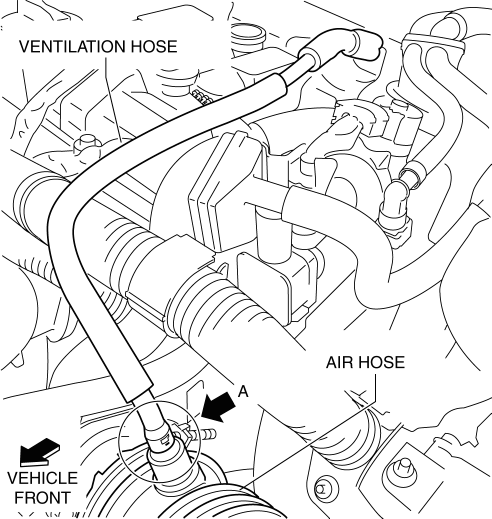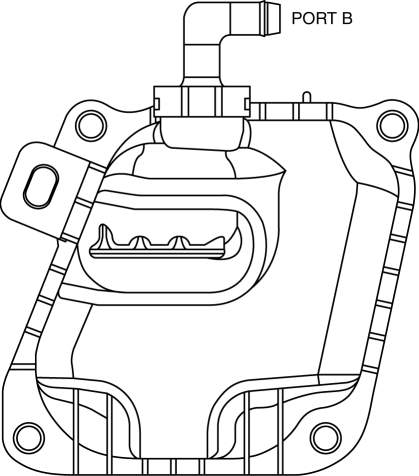Mazda CX-5 Service & Repair Manual: Positive Crankcase Ventilation (PCV) Valve Inspection
Airflow Inspection
1. Disconnect the section (A) of ventilation hose shown in the figure.

2. Start the engine and verify that vacuum is applied to the end of the disconnected ventilation hose while the engine is idling.
-
If vacuum is not applied to the ventilation hose, perform the procedure from Step 3.
NOTE:
-
If the PCV valve is operating normally, vacuum occurs in the ventilation hose, however, if the PCV valve is not operating normally, vacuum does not occur in the ventilation hose because the blow-by gas is circulated to the air hose from the ventilation hose.
-
Verify the ventilation hose vacuum as follows:
-
When the tip of your figure is touching the end of the ventilation hose, the tip of your figure is suctioned by the hose.
-
When a thin scrap of paper is contacting the end of the ventilation hose. the paper is suctioned by the hose.
3. Disconnect the negative battery cable..
4. Remove the intake manifold..
5. Remove the PCV valve and the oil separator as a single unit..
6. Verify that there is no airflow when pressure is applied to port B.

-
If there is airflow, replace the PCV valve and the oil separator as a single unit..
7. Verify that there is airflow when vacuum is applied to port B.
-
If there is no airflow, replace the PCV valve and the oil separator as a single unit..
 Positive Crankcase Ventilation (PCV) System
Positive Crankcase Ventilation (PCV) System
Purpose, Outline
Prevents release of blow-by gas (unburnt gas) into the atmosphere.
The intake manifold vacuum introduces blow-by gas to the intake manifold
via the PCV valve and the ...
 Positive Crankcase Ventilation (PCV) Valve Removal/Installation
Positive Crankcase Ventilation (PCV) Valve Removal/Installation
1. Disconnect the negative battery cable..
2. Remove the intake manifold..
3. Remove in the order indicated in the table.
4. Install in the reverse order of removal.
1
...
Other materials:
Fuel Pump Control
Outline
By switching the fuel pump discharge amount, reduced power consumption and
improved fuel economy have been realized.
The PCM determines the optimum fuel pump drive force according to the engine
operation conditions, and sends the fuel pump drive signal to the fuel pump
...
Steering Features
Improved handling, fuel economy, marketability
Column assist type Electric Power Steering (EPS) adopted
Improved handling
By using a higher steering gear ratio (15.5), the steerability has
been improved
...
Rear Brake (Disc)
Purpose/Function
Large diameter, solid-disc type front brakes with a 303 mm {11.9 in} diameter
and 10 mm {0.39 in} thickness have been adopted, improving braking force and
fade resistance.
Construction
Operation
When brake fluid is applied, the piston equipped on one s ...
